One of the highlights of my roller coaster life have been the privilege to live very close to an amazing dog! His name was Sigge and he picked me up when doing the Patagonian Expedition back in 1997. He was wild, intelligent and a joy to live with every day of my life. I loved him a lot! I wrote a book about him which became a best seller in Sweden and there´s no doubt, the relationship between humankind and dogs is very special, therefore, I am honored to introduce to you the amazing dog specialist and traveler Lorraine Chittock to you and one of her travel stories with dogs! Thanks to CuChullaine O´Reilly for another great introduction of a Long Rider!
Border Madness
by
Lorraine Chittock
Underneath the floor of my Chevy van is a whole chicken, lamb meat, as well as fruit and vegetables. The vehicle was once used as a surveillance vehicle for the Arizona police department and a long metal box hidden underneath the floor once held four batteries used to power a periscope and other electronic spying gizmos. Normally, I use the space to store valuables such as money, a laptop and paperwork for myself, Dog and Bruiser. A bitter cold winter in the Altiplano is making me leave Bolivia for Chile sooner than I’d planned, and I’m using the compartment to stash enough food to feed me and the dogs for a week.
In LaPaz, Bolivia’s capital, I’d met a German couple traveling in a huge Mercedes RV. “Chilean customs have very strict rules for bringing in agricultural products, almost unheard of in the rest of Latin America. When we were at the border, I pretended we only had a couple of tomatoes,” the woman had said. “I wasn’t going to let the custom officials know how much we were really carrying…”
Earlier in the day, I’d removed all the food from the fridge, and prominently displayed a tangerine, leftover milk and half a lemon—just as the woman had advised. Dog, Bruiser and I navigate through the Bolivian border formalities with lightening speed before driving through a stretch of land uninhabited by people from any country. At over 13,000 feet, the mountain pass is stark, cold and windy.
We roll up to Chile’s immaculate border and are greeted by three sniffer dogs and their handlers. My stash of hidden food… A year before, I’d done a story about the largest police dog facility in Bogota, Colombia. The words of their veterinarian, Dr. Nancy Lopez, rings in my head. “The Labradors are perfect as food trainers, as they have mucho appetites. The only time these dogs eat is during their daily training sessions.”
If I open the sliding side door, the Labs will get a huge whiff of my illegal goods. Before I even have time to contemplate the consequences of my contraband being discovered, an official greets me.
“You’ll need to get your passport stamped over there,” the man says, pointing to a line of people inside. “After that, fill out these forms for your dogs.”
The man escorts me inside, making it difficult to slow a chain of events which could result in a heavy fine or worse. Meanwhile, Dog and Bruiser lean out the open window and bark furiously at the Labs. The furry creatures pant happily, oblivious to the onslaught of fury they’ve unleashed, and to the role they could play in my future. But wait. Could the sniffer hounds be so sidetracked by Dog and Bruiser that their scent glands are deterred from the pounds of hidden meat? “Food is the motivation for Labradors,” Dr. Nancy had said. It’s likely the minds of these mutts are already focused on my smuggled goods.
While my passport gets stamped and a uniformed official looks at the rabies vaccinations, a smile from a portrait of Chile’s first woman president, Michelle Bachelet, a sash draped over her cream colored tunic, soothes my fears.
“This rabies vaccination is good for three years?” the man asks suspiciously of the jabs received in California. “The inoculations in Chile are only good for one year. I’m not sure if we can accept these…” I feign disappointment while my heart leaps at the possibility of being turned away from the border without further incident. “And where’s the certificate from a vet?” he asks, shuffling through the stack of documents. “And proof they don’t have worms? And we need a form from SAG.” Servicio Agricola y Ganadero is the Bolivian governmental agricultural office which deals with livestock and other animals. I have none of these documents. Most borders I’ve crossed since leaving America have barely acknowledged the existence of my two canine companions and I’d erroneously assumed this one would be no different. “I’m sorry, if you want your dogs to enter Chile you’ll have to return to Bolivia and get the correct documentation.”
After five days, we head towards Oruro, with the intent of completing the veterinary paperwork for Dog and Bruiser. Before hitting town we take a dusty track leading to low hills which I hope will provide a sheltered place to camp for the night. Dust gives way to a white surface. A salt lake! Not the famous Salar de Uyuni, the largest and highest salt lake in the world. This one is more like a large pond, but does have five flamingos, and the dogs and I walk around the perimeter until we find a perfect spot to camp.
“Time to move the van,” I say, following tire tracks across the lake while Bruiser runs alongside, mouth agape in joy. Suddenly the back tires, low on tread and needing to be replaced, begin spinning into the salty surface until hitting dark mud. The van comes to a halt. “I guess we’re camping right here tonight. It’s too late and I’m too tired to deal with it now.” I hope the back tires and mud dry out when the sun rises in the morning.
The next day, it’s impossible to tell where salt ends and frost from the frigid Altiplano night begins. Ice makes everything damp, and by the end of our morning walk my boots are caked with a few inches of spongy moss and salt. Dog is none too happy her paws are covered in the salty mess and tries to clean off a mixture which resembles cow dung without the smell on our bed.
The sun gets warmer and higher, but doesn’t shine on the back tire which is responsible for propelling the van forward. Bruiser follows me back and forth for the next three hours as I haul bucketloads of dirt and stones from higher ground to lay in the path of each tire, and then painstakingly edge the van forward. Ten yards from a firm patch of coarse grass at the edge of the lake, I hit another wet area. The tires sink deeper than before.
I hide in the van for an hour, cry a few tears, and hug Dog. The break gives my mind a chance to find an alternate solution. What if I lay out the van’s rubber floor mats in the path of each tire? After a half hour of shoveling underneath each tire and laying the rubber and a small piece of carpet underneath, I drive out of the muck and mire and onto hard soil. Bruiser runs after me, sharing in my victory. Free!
After a month camped on the outskirts of Oruro in an area, I have all the paperwork completed for the dogs, have bought two new tires, and finish recording the audio version of On a Mission from DOG. Time to head once again for Chile. I veto the idea of visiting the famed Salar de Uyuni, the largest and highest salt lake in the world at 7000 square miles, since the road to get there is horrific. But a trip to Bolivia wouldn’t be complete without at least visiting Salar de Coipasa, a substantially smaller salt lake at 1500 square miles, which is en route to a less frequented border than the previous one we attempted to cross.
Twenty miles past Oruro the raised and paved road turns first to gravel, then corrugation. Bruiser is alarmed by the body jarring motion and trembles. I speed up, then slow down, but the pounding doesn’t change. It quickly becomes apparent the trucks that pass this way leave the raised road during the dry season and create their own paths through powdery dust. I do the same. The van is immediately engulfed in a fine dust which enters every vent and crack in our aging conveyance, as well as coating the occupants fur and hair. The hours and miles pass slowly and the cold winter air receives extra reinforcements from the higher Andes mountains.
140 miles takes the better part of a day as I make sure there’s enough stops so the dogs are able to walk, pee and rest from the journey. At the small town of Sabaya we leave the main track and an hour later reach Villa Vitalina, where a long, horizontal drawing at the entrance to Salar de Coipasa serves as a guide for which mountains to aim for in order not to get lost on the deceptive expanse of white salt.
“Careful,” I think, remembering how easily I was stuck on the tiny lake. I negotiate the van hesitantly, but it’s quickly clear from the numerous tire tracks imbedded into the salt that this lake is frequented by far more traffic. The tires make crunching sounds and we pass several men mining the salt.
At 11,000 feet, the wind is sharp, and shafts of late afternoon light reflect off the salt like billions of crystals. I want to camp on the lake. I drive a mile, then pull away from the tracks and come to a stop.
“Here. We’ll stay here the night,” I announce, stepping down from the van and rushing quickly around to slide the door open for the dogs. I can’t wait to see how they’ll react to this new environment. In our five years of travel, we’ve experienced deserts, swamps, savanna and forest, but never a salt lake. Bruiser, wanting to be with me above all else, jumps out and licks the strange surface. Dog is more hesitant, and after only a few minutes on the hard and sometimes bubbly surface, decides she’s had enough and jumps back inside. I repeatedly try coercing her out for photos, but it’s clear she’s not interested. There are no smells to interest them, and I wonder if the salt burns their pads. Or do they sense that just beneath this hard surface is water and potential danger?
When the sun drops below the horizon, the air turns frigid. I close the doors against a world of sparkling lights which shine above, which are reflected on the hard surface below. Inside the van, the bed covers are sprinkled with pieces of salt. By morning, the dog’s opinion of Salar de Coipasa has not changed: this is their worst camping location ever. It seems pointless to stay if two-thirds of the pack are unhappy. We head back to Villa Vitalina, before continuing onto the Chilean border.
“Do you have meat, vegetables, fruit or dairy products?” the agricultural inspector asks. I’ve already thrown away or eaten the type of foods he’d be interested in, so I pull out some dry goods to give him something to do. I’d read that tea bags of every variety are forbidden, but when I offer mine, they’re ignored.
“Dog food?” he asks. The word no slips out of my mouth, as much a surprise to me as the question. Dry dog food had been difficult to find in Bolivia, and every time I found vendors who divided up huge bags to sell by the pound, I bought some. I now have over forty pounds of dog food stockpiled behind the driver’s seat.
I continue pulling out food items, when I notice the bright yellow plastic sack containing dog food is no longer concealed by my dirty laundry bag. Desperate it not be discovered, I abruptly yank open the passenger door and fling the seat up, thus hiding the yellow sacking.
Just then, four officials appear to check on my vehicle and like ants, they work their way through the van, poking at this, and prodding at that, one man even poking a screwdriver-like tool into the floor to ceiling carpet. Only once since leaving America has the vehicle been inspected.
“Give me sniffer dogs any day,” I mutter, remembering the first aborted crossing with some nostalgia.
I open my secret compartment with a flourish, and fling open the back doors, expecting the team to mutter about the fifteen gallons of gasoline I’m hoping to bring into Chile, where prices haven’t been under $5 a gallon for as long as anyone can remember. All they confiscate are wood chips I’ve been using to cushion two wine glasses.
Meanwhile, the veterinarian on duty is concerned about Dog and Bruiser.
“We have a problem,” he says. I had all the paperwork from a vet in Oruro, along with new rabies jabs, de-wormer and distemper. But somehow I’d forgotten about getting the correct paperwork from SAG. In addition, I don’t have an address in Chile. I bluff this by finding a hotel address in my guidebook, and agree to go there directly once I cross the border. The newest dilemma is that my letter from the vet in Oruro is only good for ten days. This is day twelve. And some of the shots were done after the letter was signed. The border vet has already examined Dog and Bruiser and found both to be in good health. We’ve been at the border two hours. I recognize that despite the ridiculous amount of time this is taking, this man is on our side, hoping to prevent me from having to return to Oruro on a road he knows to be hideous.
“The only way to get around this problem is for you to agree to keep your two dogs quarantined inside your vehicle for twenty-one days. Can you do that?”
“Of course,” I quickly agree.
“The dogs can’t mix with any local dogs, or with Chilean wildlife.”
The rule is ridiculous. Even America with all its laws, only quarantines pets if the animal displays symptoms of being ill, and then for only fourteen days. But quarantining Dog and Bruiser inside my van? For twenty-one days? I listen intently while the veterinarian makes sure I understand the gravity of the paper I’m about to sign. I nod seriously, grateful of acting classes in college.
It’s after six p.m. before all the paperwork is complete. “I’m sorry, so sorry! I couldn’t do anything to make the crossing go faster.” Dog licks my face while Bruiser whimpers in excitement. “I missed you too… Let’s get out of here,” I say, while waving good-bye to the officials and casually driving through the border. It’s freezing, the sun has set and the wind howling. I have grit in my ears, and my hair is matted and dirty. I long for a scalding hot shower, but the nearest one is over 100 miles away after a drop of over 10,000 feet in altitude.
When I see llama tracks in the dust I drive off the main road and park. Already ignoring the possibility we’ll run into local dogs, and less than five kilometers away from the border I fling open the door to the van and take Dog and Bruiser on a quick walk, all three of us ecstatic the ordeal has ended. A thick layer of dust coats the windshield and everything inside. I have no energy to clean out the mess. I’m chilled to the bone and need to eat, but there are no stores nearby. I light the stove, and the dogs and I share what little food we have: a can of mackerel, pasta, and for Dog and Bruiser, a very generous supply of dry dog food.
In 1991 Lorraine Chittock arrived in Egypt as a magazine photographer
and within months was researching the legendary Forty Days Road. A few
years later she crossed the Libyan Desert with 200 camels and eight
Sudanese men.
After twelve years living and traveling throughout Africa and the
Middle East, Lorraine decided to take her career and two Kenyan
ex-street dogs on the road. The pack of three touched down at San
Francisco Airport and began exploring North America in a Jeep
Wrangler. Two years, 30,000 miles, and twenty-two states later,
Lorraine tranferred her belongings to a $750 Chevy van once used as a
surveillance vehicle by the Arizona police and headed to Latin
America. The pack are now residing in a Chilean cabin overlooking the
Pacific Ocean.
Lorraine’s five travel books explore the world’s unique bond with
animals. DOGS BEYOND BORDERS – TALES AND TIPS FROM THE ROAD includes
interviews with fourteen human-dog packs, and how to bridge cultural
gaps while traveling with your dog. http://LorraineChittock.com
Also see The Long Riders Guild!

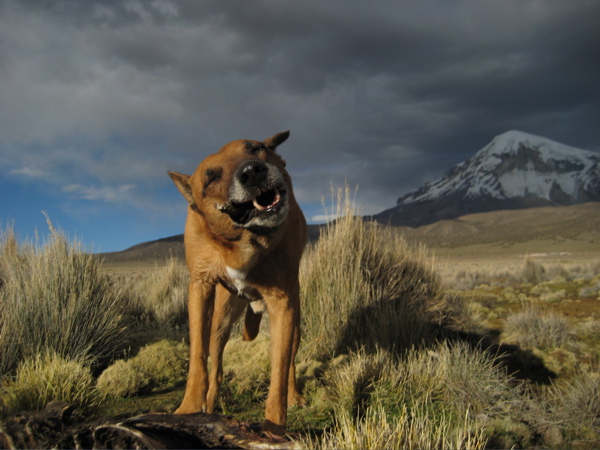
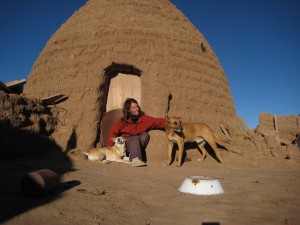


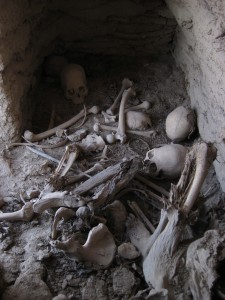
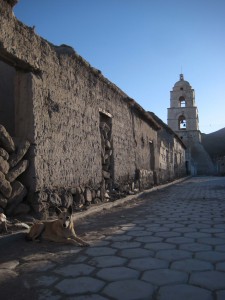
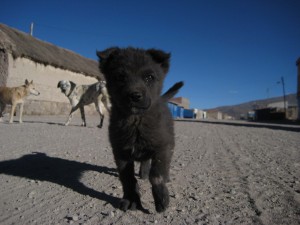
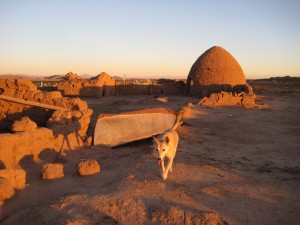
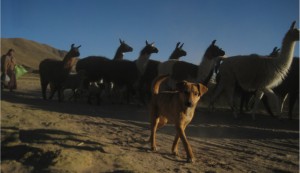
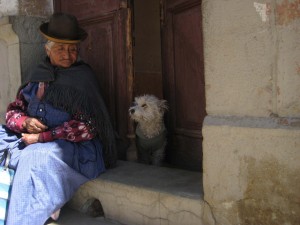
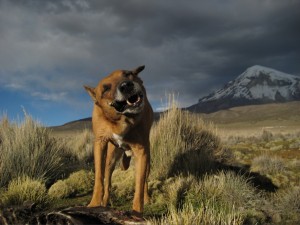

Jeez, that sounds like real border madness… I’ve crossed Chile border twice with my dog, never experienced anything so terrible. Although I did have all the paperwork done, it didn’t take too long.